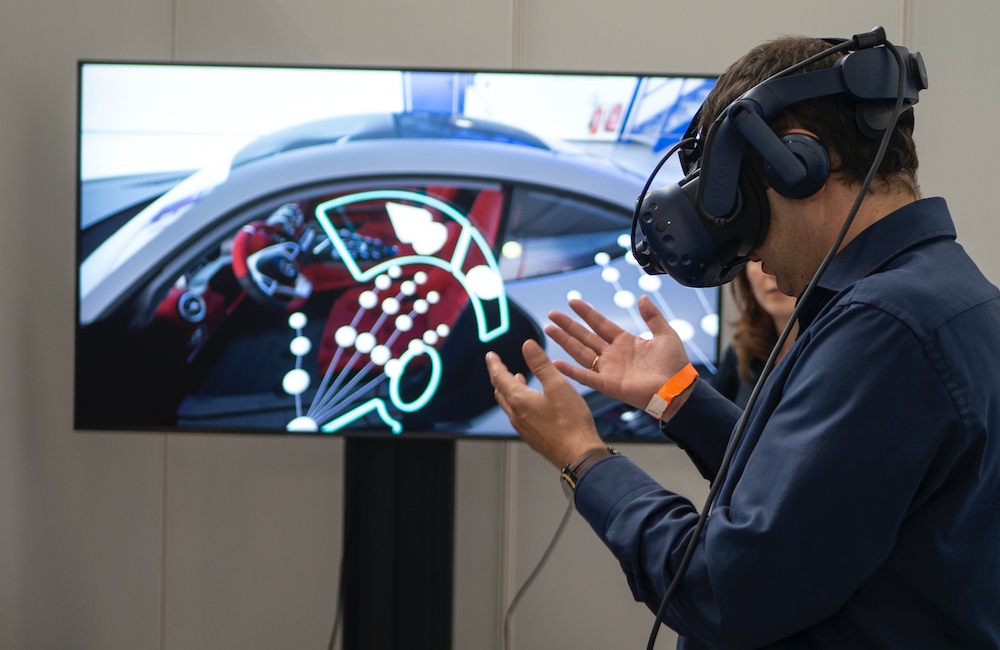Virtual reality (VR) has become an integral part of healthcare simulation learning, education, and training. Specifically, virtual reality simulation can be used to improve rehabilitation results through enhanced demonstration and patient education. Through these VR experiences, there has shown great promise for physical and occupational therapy as educators and clinicians are able to use the technology to virtually show patients what is expected of them regarding rehabilitation and explain best practices. This article further explains how patient-centered VR can benefit those in need of rehab.
The article “Meet Virtual Reality, Your New Physical Therapist” by Alina Tugend highlights how gaming technology can be used for improving physical ailments. She provides the story of Michael Heinrich, a man who was riding his motorcycle on the University of Michigan campus when a rotted tree fell on him and snapped his neck, causing him to permanently lose the use of the lower half of his body.
Tugend explains that, about halfway through his rehab stint, his occupational therapist, Michael Blackstock, asked whether he was interested in trying virtual reality for his therapy. He agreed and found that from an emotional standpoint, coming off an injury where he lost the majority of the use of his body, VR pushed the boundaries of what he thought was possible.
She provides another example of patient-centered VR for rehab and patient education discussing the case of 59-year-old Pamela Pleasants. This woman began using virtual reality therapy for an injured shoulder through XRHealth. To begin, she completed an intake over a video call with a physical therapist provided by the company.
By the time the VR headset arrived in the mail, her therapist had decided what applications were needed — out of eight currently offered by the XRHealth. — that Pleasants would use, as well as for how long and how frequently, and then trained her how to use them. The patient can change programs either using a controller or by eye gaze as well. After four months, Pleasants said her shoulder felt tremendously better.
Similar to these experiences, rapid advances in hardware and software technology and a younger generation of practitioners more comfortable using such technology have led others to adopt VR learning for rehab and patient education. Plus, a greater acceptance of telehealth during the pandemic has further spurred patient-centered VR’s use. Tugend stresses that one of the great benefits of VR therapy is that the method can provide a stream of specific data to both the clinician and patient on “how often and how well the patient accomplished each exercise and where adjustments are needed.”
Also according to the article, “Virtual reality: A strategy to improve patient-centered care” by Jaime Hannans, Ph.D., RN, CNE, and Colleen Nevins, DNP, RN, CNE, this technology can also help nurses gain empathy and navigate difficult conversations. As VR immerses the learner or patient in a three-dimensional digital environment using headsets to incorporate as many senses as possible, they are able to experience true-to-life scenarios. The article also mentions that, according to Tiffany and Forneris, VR technology use is rapidly expanding, with the potential for as much as 45% growth by nursing programs within the next five years.
Examples of Rehab VR Products
AppliedVR: AppliedVR provides virtual reality-based treatments representing a comprehensive approach to chronic pain that empowers patients with accessible digital tools self-managed in their own homes. By harnessing the unique properties of immersive therapeutics, the company is delivering a bio-psycho-social solution to address the bio-psycho-social condition of chronic pain. The company is leading a transformative shift in-home health solutions with expertise, evidence, and empathy. According to AppliedVR, by putting the power of accessible, intuitive, self-managed digital tools into the hands of chronic pain patients, a future of enhanced healing and hope is within reach.
XRHealth: XRHealth combines online therapy and VR/AR for chronic conditions to establish a virtual clinic that provides engaging treatments for patients without them having to leave home. Their licensed therapists work with patients remotely, using a Virtual Reality (VR) headset that XRHealth provides, to optimize their treatment in real-time. The company’s VR and AR applications are administered by licensed XRHealth therapists. The XRHealth family of applications has been developed for medical use, to make therapy more enjoyable, engaging, and motivating. All company virtual reality apps are compatible with PICO Neo 2 VR headset.
Neuro Rehab VR: Neuro Rehab VR creates engaging, motivating, and fun virtual training exercises for neurological physical therapy leveraging breakthroughs in neuroplasticity. The company’s virtual training exercises are designed with physical therapists and machine learning algorithms to tailor each exercise to a patient’s specific therapy needs. This is so that they receive the most efficient care possible to help expedite their recovery.
REAL System by Penumbra, Inc.: In 2017, Penumbra teamed up with Sixense Enterprises, a San Francisco Bay Area company specializing in enterprise use of VR hardware and software to build the REAL System. REAL System is an advanced rehabilitation technology using virtual reality designed to empower patients with engaging therapeutic activities that offer endless possibilities. The solution offers activities with multiple intensity levels that focus on the range of motion (ROM), core and balance, cognition, and functional uses.
International Society for Virtual Rehabilitation
Focused on VR for patient rehab, the main purpose of the International Society for Virtual Rehabilitation is the encouragement of research in, education in, advocacy of, and improved collaboration between researchers, clinicians, industry, and policymakers with regard to, virtual rehabilitation and telerehabilitation. The Society’s purpose will be fulfilled through scientific meetings, tutorials, publications, postings on the Web, awards, sponsored pilot research, and other exchange of information.
Established in January 2009, the society provides a multidisciplinary forum for engineers, scientists, and clinicians who are interested in employing new technologies for physical, psychological, cognitive, and social rehabilitation applications. The purpose of the society is to facilitate interaction between the communities interested in the field in order to: promote discussion, facilitate standardization, create opportunities for collaboration, represent the virtual rehabilitation community, and provide recognition for excellence.








